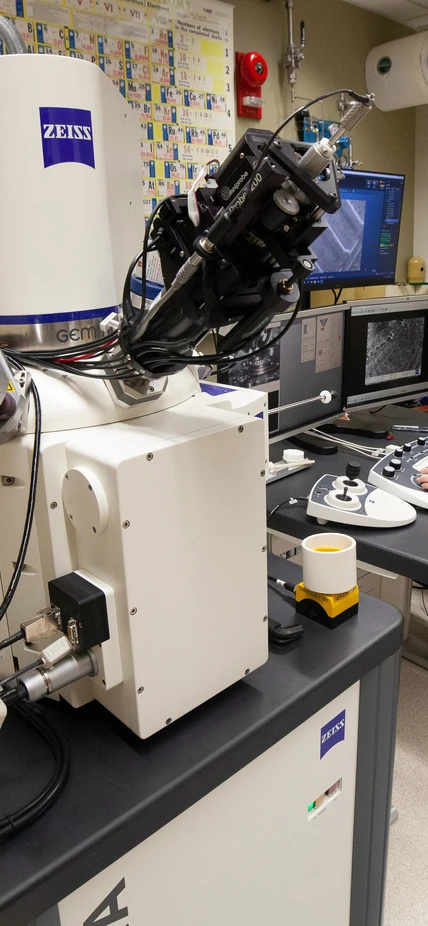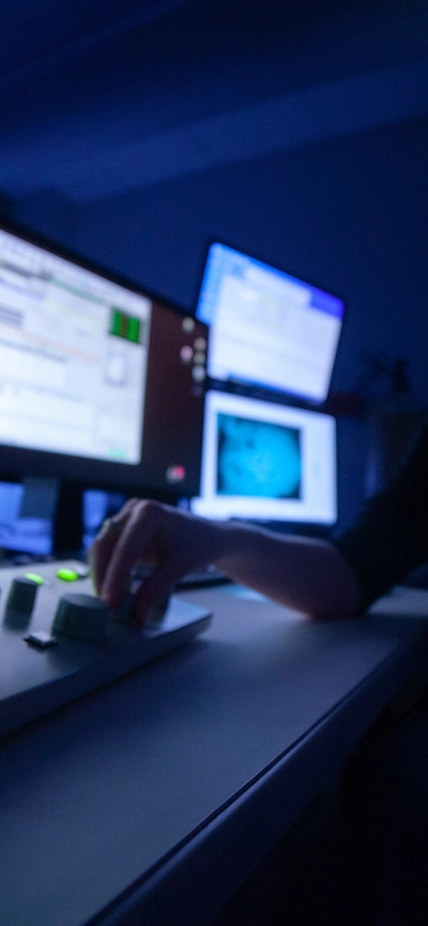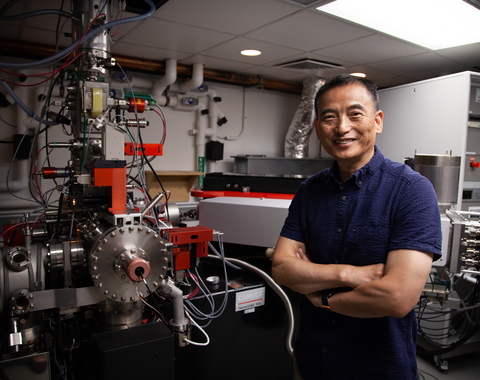Meet your "friendly English probe operator" in charge of the electron microprobe laboratory at the Earth and Planets Laboratory. Emma Bullock takes us behind the scenes to learn about her work, how she became a geologist, and why she chose to work at Carnegie Science! The following transcript has been edited for clarity.
What do you do here?
I am Emma Bullock and I am the electron probe lab manager here at the Carnegie Earth and Planets Laboratory.
I run the electron probe here, which is this instrument behind me. The electron probe is basically a fancy type of microscope where we use a beam of electrons to make images and to collect the chemistry on a series of different samples.
What sort of things do you look at?
I love working at Carnegie and working in this lab in particular because it gives me access to a whole range of different types of projects. We have so many scientists here looking at everything from meteorites to samples that they've just created in the laboratory to things we've never seen before and I get to be a part of that, which is really pretty cool.
How small of an object can the electron microprobe image?
The smallest objects we can actually see in this instrument are only a few nanometers in diameter, which for reference if you think of a single human hair that's about 50 microns.
If you take a human hair and you slice it multiple, multiple, multiple times, we would be able to see that. In fact, on our screen, that would look huge. So we can look at really tiny objects and the best thing about this instrument is we can get the chemistry of them too.
How did you get interested in this work?
I've always been interested in geology. I always loved rocks and even as a kid when I would go for walks with my parents, I used to go and stuff my pockets full of rocks and bring them home. I broke more than one washing machine that way. Sorry, mom.
I kind of fell into studying meteorites. I happened to be doing my undergraduate degree in Manchester and I had the opportunity to look at the chemistry of a meteorite from Mars and it took off from there.
Are there any upcoming projects that you are looking forward to?
One of the projects that I just got involved with that I'm really excited about is looking at new samples that came from the Moon. So 50 years ago the Apollo astronauts brought back samples of Moon rock and some of those samples were kept in isolated storage for the last 50 years.
No one has looked at them. No one has opened them until right now. And so we're going to get to see some pieces of the Moon, that no one else has ever seen before.
What is your ultimate goal as a scientist?
My goal as a scientist is to advance our knowledge and to pass that onto the next generation of new scientists.
Today you’re interviewing with me, but what are your plans for tomorrow?
My plan for tomorrow is I have a postdoc user. He is looking at samples made in one of the high-pressure diamond anvil cell presses. And so I'm actually going to set up the probe, we're going to analyze a whole suite of elements and from that, he's going to be able to tell us what's happening in the Earth's core and in the Earth's mantle.
What is your favorite memory as a scientist?
I've had almost 20 years now in my career as a scientist. So there's been some good points. I would say one of the highlights for me was the first time I ever got a paper published. That was during my Ph.D. and I put so much work into it. Finally actually seeing my name come out on something that was going to be read by people was really exciting.
People still reference that paper and every time they do, I get butterflies in my stomach. So that was a good memory.

If you could meet someone from the past, who would it be?
I would really love to have met someone like Mary Anning. She was a British geologist who lived in the 1800s and she actually made some incredible fossil discoveries. She discovered an Ichthyosaur skeleton when she was only 12 years old and had many more discoveries after that.
I would love to bring her through time and actually see what she makes of science as it is today.
So, I noticed you have cats on your electron microprobe. Do you have a cat infestation..or?
The cats were a gift from one of the postdocs. Every electron probe lab I've ever worked in has had a theme. I've worked in a lab with a space theme. I've worked in a lab that had a sparkly light theme. I'm a bit of a crazy cat lady, and so I have cats on top of the spectrometers.
When the instrument is running, there are some moving parts and one of those moving parts is basically a stick that I stuck the cat on the end of. When the instrument turns, the cat spins and I know it's working properly.
Where do you think electron microprobe science will be in 100 years or so?
The instrument that I'm running was only actually developed in the 1950s so we've come a huge way since then. I'd be really interested to see where we are in a hundred years’ time. Maybe something like artificial intelligence will be running the probe. Instead of having your friendly British probe operator, you will just be talking to a robot or a computer.
That'd be a little sad, actually. I'm not sure I want that future.
But then you can go outside!
But then I could go outside! Or, actually, maybe I could use it to my advantage. Maybe by then, I'll be able to run the probe from a beach, you know, in Hawaii or somewhere.



